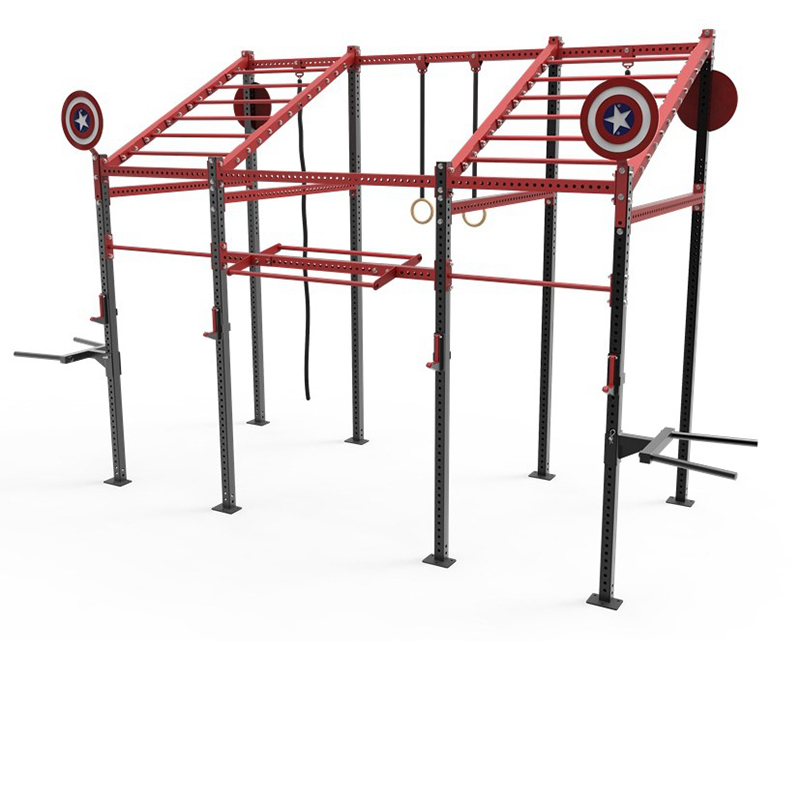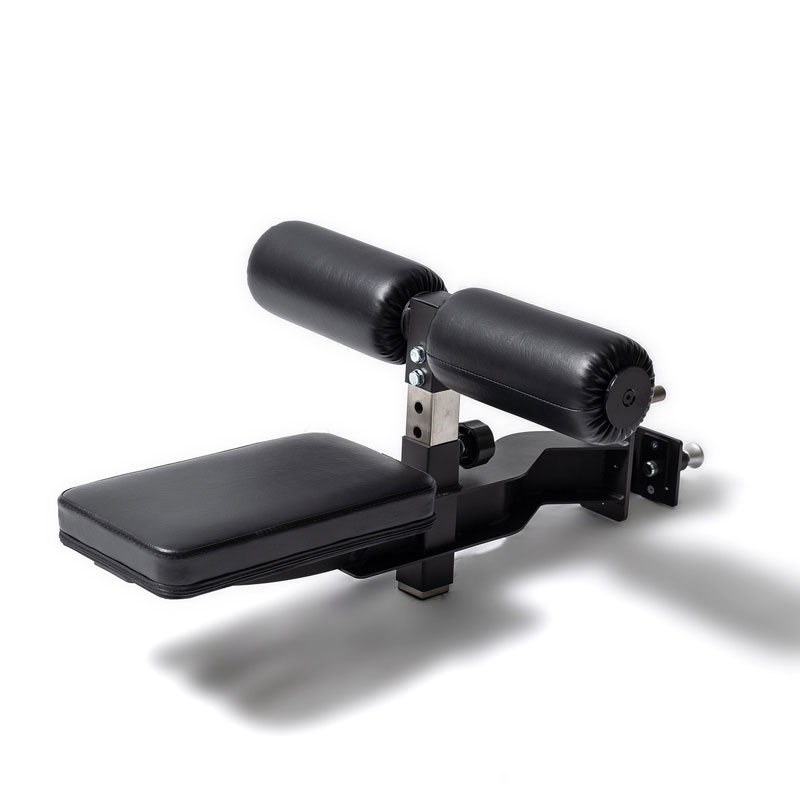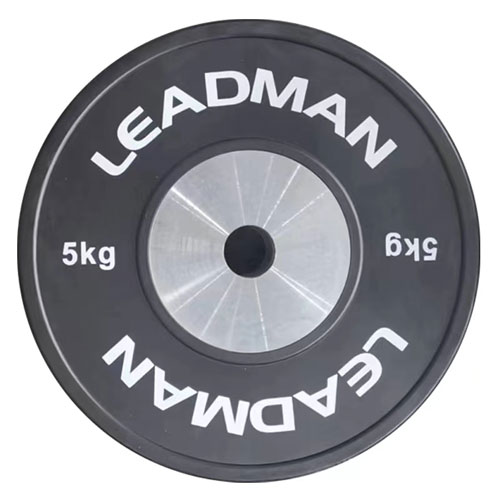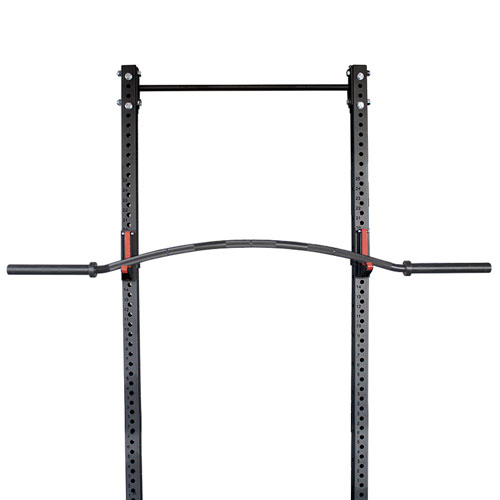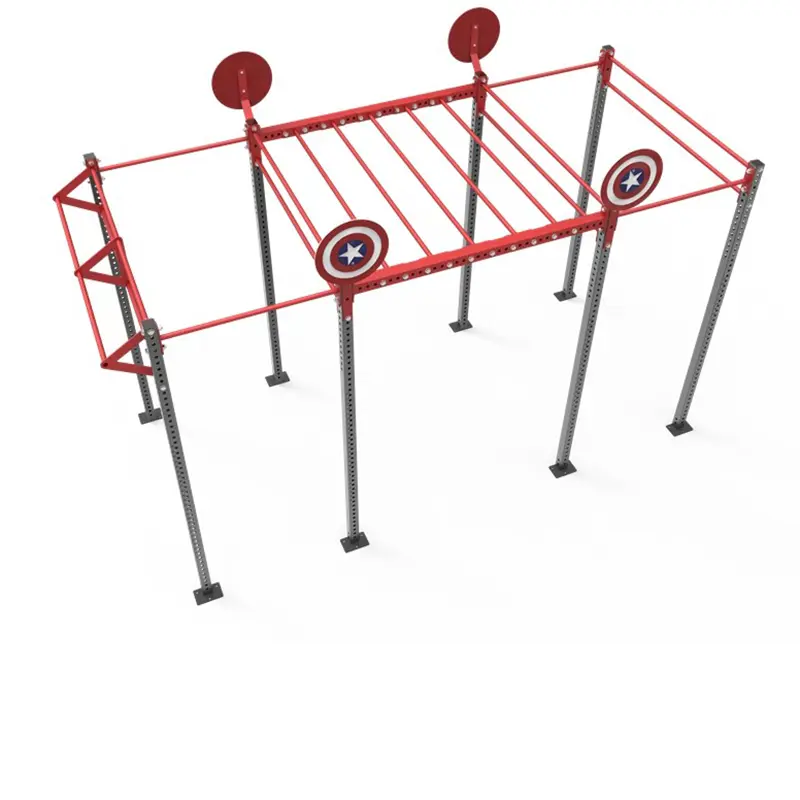Qual é a importância de utilizar um tapete debaixo de um banco de musculação?
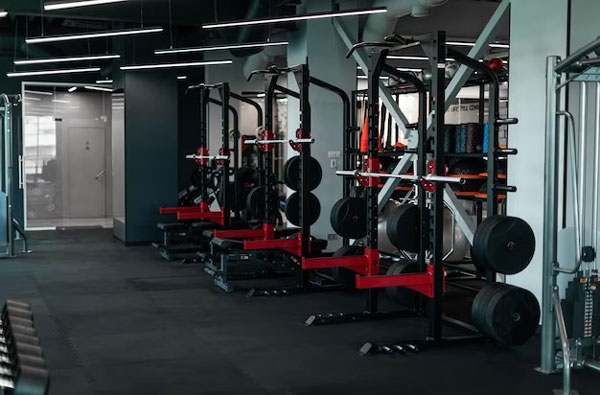
Imagine this: You're finally setting up your dream home gym, meticulously choosing weights, a sturdy weight bench, and… a gaping hole in your plan. That nagging feeling in the pit of your stomach telling you something's missing? It might be a mat. The creaking of your hardwood floors as you lower that heavy barbell, the worried glance at your expensive Persian rug, or the impending dread of a neighbor's noise complaint – these are all scenarios that highlight the importance of considering a mat for your weight bench. So, the core question: Is a mat necessary under a weight bench? The answer, as we'll explore, is nuanced. A mat under a weight bench isn't always essential, but offers significant benefits depending on your situation and priorities. This guide will help you determine if a mat is a crucial investment or an optional extra.
Proteger os seus pavimentos: Prevenir danos dispendiosos
Your flooring is a significant investment, and damage from a weight bench can be surprisingly extensive and expensive to repair. The type of flooring you have drastically affects its vulnerability.
- Madeira de lei: Prone to scratches, dents, and indentations from dropped weights or the constant pressure of the bench's legs. Repairs can involve costly sanding, refinishing, or even replacing entire planks.
- Alcatifa: While seemingly more forgiving, heavy weights can flatten the pile, creating permanent indentations. Moisture from sweat can also seep into the padding, leading to mildew and unpleasant odors.
- Azulejo:Geralmente mais resistentes, mas a queda de pesos pode ainda lascar ou rachar os azulejos, resultando em substituições dispendiosas.
- Betão:O mais resistente, mas mesmo o betão pode sofrer de manchas e de indentações ao longo do tempo, especialmente com pesos mais pesados.
A simple mat can act as a buffer, absorbing impact and preventing these costly damages. Imagine replacing a damaged hardwood floor: the labor, material costs, and disruption to your home can easily run into hundreds, even thousands, of dollars. A preventative mat, on the other hand, costs a fraction of that and offers long-term protection.
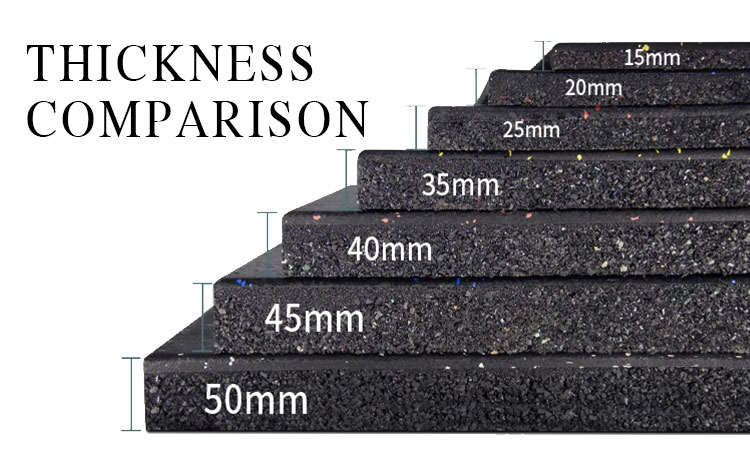
Reducing Noise and Vibration: A Harmonious Home Gym
O levantamento de pesos gera inevitavelmente ruído e vibrações, especialmente com pesos mais pesados e treinos intensos. O bater dos pesos, o raspar do metal e as vibrações que atravessam o chão podem ser perturbadores para a sua casa e, especialmente, para os seus vizinhos.
Repeated loud noises can lead to friction with roommates or neighbours, potentially escalating into complaints or even legal issues. A thick, well-designed mat significantly reduces noise and vibrations. Materials like rubber and high-density foam are particularly effective at absorbing impact sound.
Consider the scenario of living in an apartment building. The sounds of your workout, amplified by the building's structure, can travel easily to neighbouring units. A mat can be the difference between maintaining harmonious relationships with your neighbours and facing complaints or conflicts.
Melhorar a estabilidade e a segurança: Um treino mais seguro
A mat doesn't just protect your floors; it also enhances the stability and safety of your weight bench. Uneven surfaces can cause the bench to wobble, increasing the risk of accidents. A mat provides a level, stable base, preventing slippage and ensuring a secure workout. This is especially important during demanding exercises like bench presses or overhead presses, where stability is paramount to avoid injury.
A stable bench reduces the chance of the bench shifting during heavy lifts, minimizing the risk of dropped weights or injuries. The increased safety benefits not only the user but also protects the surrounding environment from damage caused by accidental weight drops.
Tipos de tapetes para bancos de musculação: Encontrar o ajuste perfeito
The market offers a variety of mats specifically designed for weightlifting. Choosing the right one depends on your needs and budget.
- Tapetes de espuma:Acessíveis e relativamente leves, proporcionam um bom amortecimento e redução do ruído. No entanto, podem ser menos duráveis do que outras opções e podem comprimir-se com o tempo.
- Tapetes de borracha: More durable and provide superior shock absorption and noise dampening. They're more expensive but offer long-term value.
- Tapetes de puzzle: Interlocking tiles that can be customized to fit any space. Easy to clean and replace individual tiles if damaged. However, the seams can be a tripping hazard.
- Tapetes de ioga: Generally thinner and less durable than dedicated weightlifting mats. Suitable for lighter weight training but not ideal for heavy lifting.
Consider the size and thickness of the mat. It should extend beyond the base of the weight bench to provide adequate protection and stability. Thicker mats (at least ½ inch to 1 inch) offer better cushioning and noise reduction.
(Incluir aqui ligações para tapetes recomendados na Amazon ou noutros retalhistas).
When a Mat is Absolutely Necessary: Non-Negotiable Situations
Em certas situações, um tapete não é apenas recomendado; é absolutamente necessário.
- Habitação em apartamentos:O potencial para queixas de ruído e danos em pisos partilhados torna um tapete indispensável.
- Pisos delicados: Hardwood, parquet, or tiled floors require extra protection. The risk of irreversible damage far outweighs the cost of a mat.
- Apartamentos em andares superiores:O impacto dos pesos é amplificado nos pisos superiores, tornando a redução do ruído ainda mais crítica.
A não utilização de um tapete nestas situações pode levar a reparações dispendiosas, a relações tensas com os vizinhos ou mesmo a litígios legais.
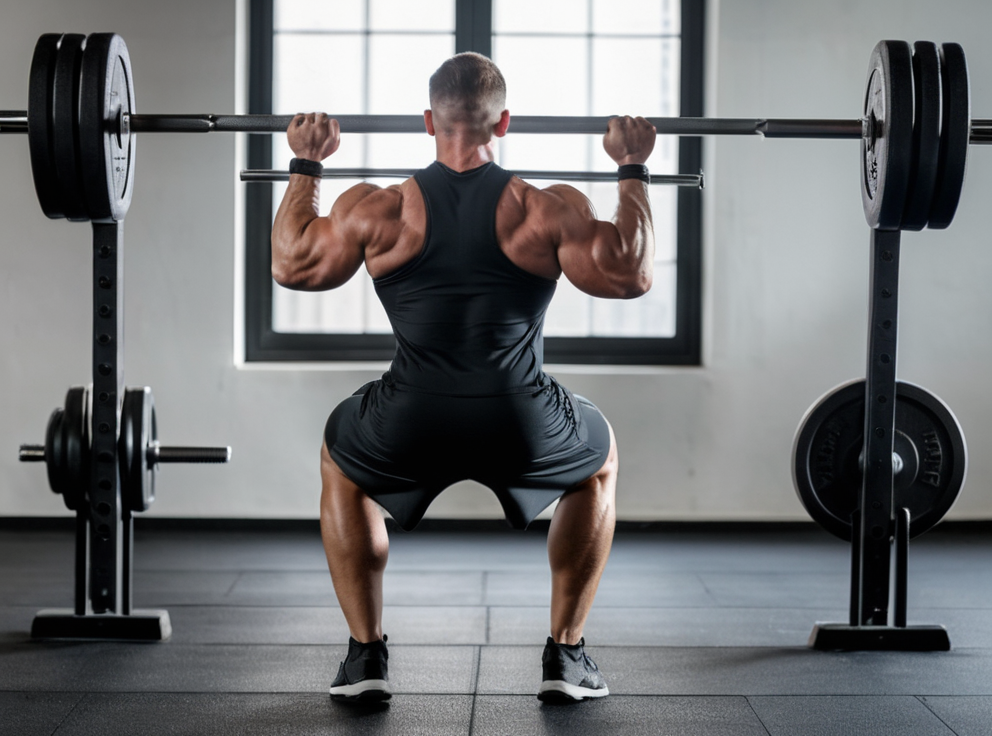
When a Mat Might Be Optional: Weighing the Costs and Benefits
Nalguns cenários, a necessidade de um tapete é menos crítica.
- Pavimentos de betão:O betão é naturalmente resistente aos danos, o que torna o tapete menos essencial. No entanto, um tapete pode melhorar a estabilidade e reduzir o ruído.
- Garagens:O ambiente de uma garagem é normalmente mais tolerante e o potencial de danos é reduzido.
- Salas de exercício dedicadas com pavimento resiliente:Se tiver uma sala de exercício dedicada com um pavimento de borracha ou semelhante já instalado, um tapete pode ser redundante.
In these situations, a cost-benefit analysis is appropriate. Weigh the price of a mat against the potential risks of damage or noise complaints. If the risks are minimal, a mat might be an optional expense.
Alternatives to Mats: Exploring Other Options
Embora os tapetes sejam a solução mais comum, existem outras opções.
- Contraplacado: A sheet of plywood can provide a solid, level base for the weight bench. However, it offers no cushioning or noise reduction.
- Alcatifa para trabalhos pesados:Uma alcatifa espessa pode oferecer alguma proteção, mas pode continuar a apresentar marcas ao longo do tempo.
Estas alternativas são normalmente menos cómodas e eficazes do que os tapetes dedicados ao levantamento de pesos, não tendo os benefícios do amortecimento, da redução do ruído e da estabilidade.
Conclusão: Fazer a escolha certa
A mat under a weight bench offers multiple benefits: floor protection, noise reduction, enhanced stability, and increased safety. Whether or not it’s necessary depends on your specific circumstances. Consider your flooring type, your living situation, the intensity of your workouts, and your budget. If you're in an apartment, have delicate floors, or are prone to dropping weights, a mat is virtually non-negotiable. If you have resilient flooring and a dedicated workout space, it becomes a more optional, though still beneficial, investment. Prioritize safety and consider the long-term cost of potential damage against the relatively low cost of a protective mat.
Secção de bónus: Soluções de tapetes DIY
For the budget-conscious, consider repurposing thick rubber sheets, interlocking foam tiles, or even using multiple layers of cardboard or heavy-duty padding for a more economical, albeit less aesthetically pleasing, solution. Remember, safety and effectiveness are paramount regardless of your chosen method.
Perguntas frequentes sobre a utilização de um tapete debaixo de um banco de musculação
1. Porque é que devo utilizar um tapete debaixo do meu banco de musculação?
A utilização de um tapete por baixo do banco de pesos protege o chão de riscos, amolgadelas e outros danos causados por pesos pesados ou pressão constante. Também reduz o ruído, evita vibrações e proporciona uma base estável, garantindo um treino mais seguro.
2. Posso utilizar qualquer tapete debaixo do meu banco de musculação ou preciso de um específico?
Embora qualquer tapete possa oferecer alguma proteção, o ideal é um tapete especificamente concebido para a prática de halterofilismo. Os tapetes de borracha ou de espuma de alta densidade proporcionam uma melhor absorção de choques, redução do ruído e estabilidade em comparação com os tapetes domésticos normais.
3. Preciso de um tapete se tiver um chão de betão?
Os pavimentos de betão são resistentes a danos, mas a utilização de um tapete continua a ter vantagens. Ajuda a reduzir o ruído, melhora a estabilidade do seu banco de pesos e acrescenta amortecimento extra para um treino mais confortável e seguro.
4. Como é que escolho o tapete certo para o meu banco de musculação?
Considere factores como a durabilidade, a espessura e o material. Os tapetes de borracha são altamente duráveis e eficazes na redução do ruído. Uma espessura de pelo menos 1,5 a 2,5 cm proporciona um melhor amortecimento e estabilidade. Certifique-se de que o tapete é suficientemente grande para cobrir toda a área debaixo do banco de pesos.

